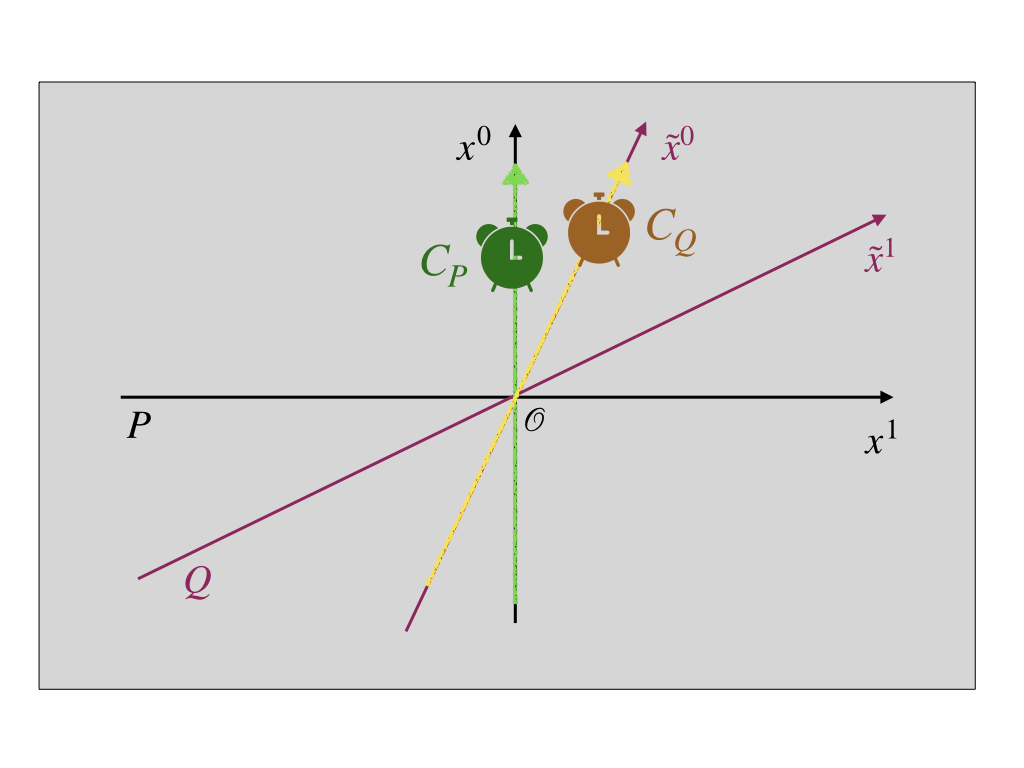Problem sheet 1
Deadline: Nov 3rd, 2023 (3 weeks)
Topic: special relativity
Please send the solutions via email to korzynski@cft.edu.pl. I prefer PDF's (for example LaTeX-generated) or common graphic formats (for example scans of your hand-written notes).
Problem 1
Let v be the velocity (standard 3-velocity) of an inertial frame P with respect to another one, Q. Define the rapidity θ as a dimensionless scalar given by
θ(v)=artanhv,
or, equivalently, by the condition v=tanhθ.
- Prove that the Lorentz transformation matrix from P to Q in a two-dimentsional Minkowski space, with 2 spatial dimensions suppressed, takes the form of
Λ=(coshθ−sinhθ−sinhθcoshθ).
-
Prove that θ(−v)=−θ(v).
-
Additivity of rapidity. Prove that if the inertial frame B moves with respect to A with rapidity θAB, while C moves with respect to B with rapidity θBC, then C moves with respect to A with θAC given by
θAC=θAB+θBC.
Problem 2
Derivation of the time dilation formula.
Consider a clock CP stationary in an inertial frame P and another one, called CQ, stationary in Q, see Fig. 1.
 Q moves with respect to P with velocity v. Assume that both CP and CQ read 0 when the two clocks pass point O.
Q moves with respect to P with velocity v. Assume that both CP and CQ read 0 when the two clocks pass point O.
-
Calculate the coordinate time x0 in P of the moment when CQ reads a fixed time t>0. Show that x0>t, i.e. clock CQ appears to run slower than CP for an observer in P.
-
Calculate the coordinate time x~0 in Q of the moment when CP reads the same time t. Show that x~0>t, i.e. clock CP appears to run slower than CQ for an oberver in Q.
-
Explain why the two results above are not contradictory.

